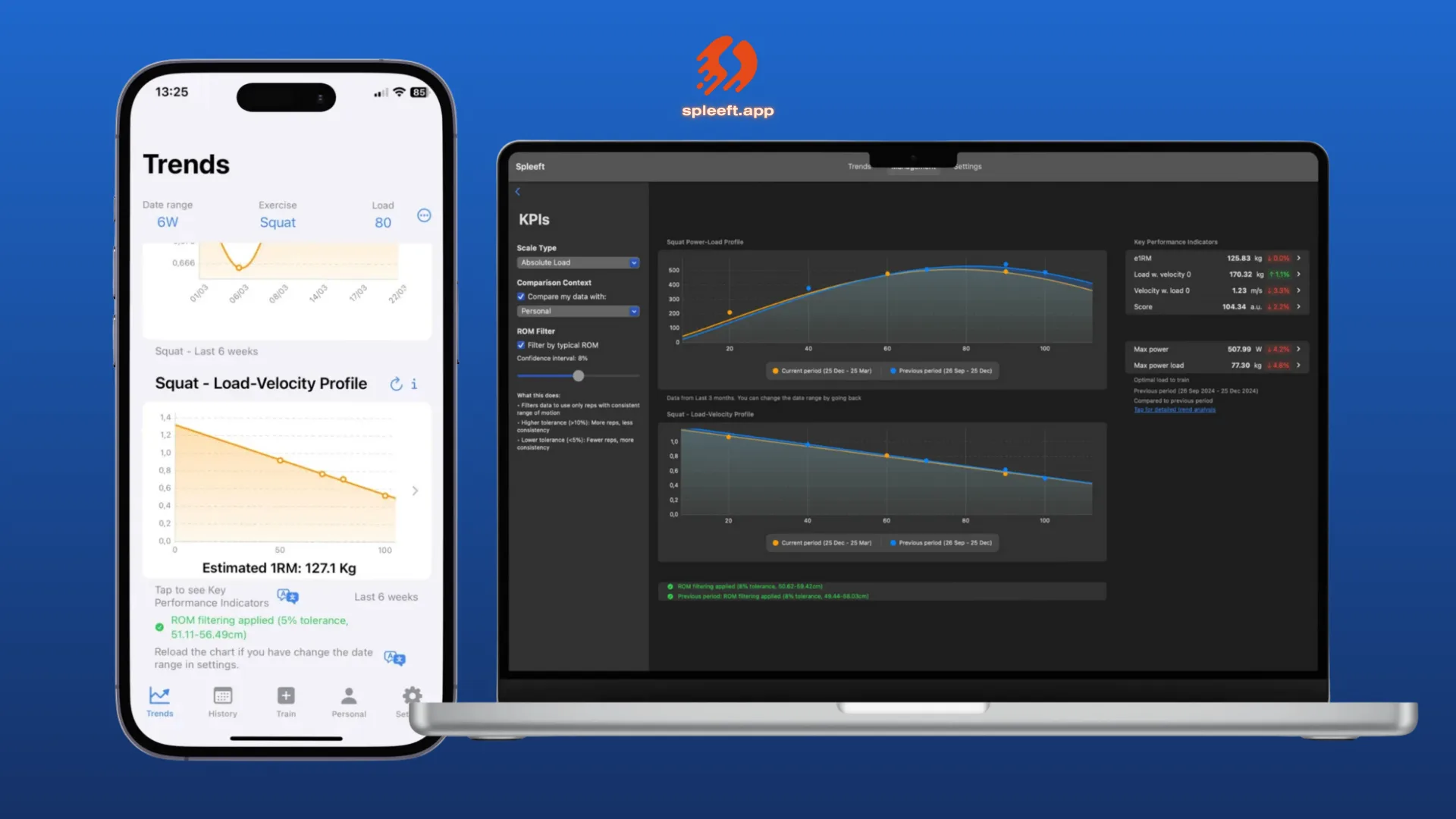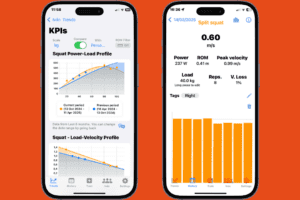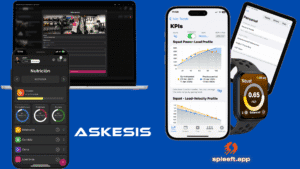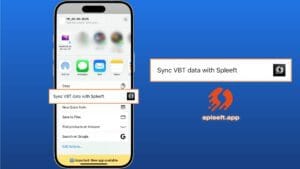Let’s set the scene: You’re halfway through a set of dumbbell bicep curls, sweat beading on your brow, and you’re laser-focused on form. But here’s the twist—how fast should you actually move during each rep to maximize power, strength, and muscle growth? Is it better to explode through the curl or savor that slow burn on the way up? If you’ve ever wondered, “How quickly should you move during resistance training?” or, more specifically, “How fast should I do my biceps curls for real results?”—you’re not alone.
Today, we’re going deep into the science and art of rep velocity, with a special focus on power training, the bicep curl dumbbell, and how Spleeft App can help you unlock your next level of performance.
DOWNLOAD SPLEEFT APP NOW FOR iOS, ANDROID AND APPLE WATCH!
Why Rep Velocity Matters: More Than Just Moving Weight
The Velocity Dilemma
Picture two lifters: one cranking out biceps curls with lightning velocity, the other moving so slowly you could time him with a sundial. Who’s building more muscle? Who’s getting stronger? The answer isn’t as simple as “faster is always better” or “slow and steady wins the race.” The truth lies in the velocity spectrum—a continuum that links movement velocity, force, and the specific adaptation you want from your training5.
The Strength-Velocity Continuum
| Training Focus | % 1RM | Mean Velocity (m/s) | Example (Biceps Curl) |
|---|---|---|---|
| Absolute Strength | 90-100 | <0.5 | Heavy, slow bicep curl dumbbell |
| Strength-Velocity | 70-85 | 0.5-0.75 | Moderate weight, controlled up |
| Velocity-Strength | 30-60 | 0.8-1.3 | Light weight, explosive up |
| Starting Strength | 10-30 | >1.3 | Plyometric or ballistic curls |
Adapted from the Strength-Velocity Continuum5
The take-home? If you want to build maximal strength you’ll need to grind through some slow, heavy reps. But if your goal is power—think explosive athleticism, sprinting, or jumping—then moving fast, even with lighter weights, is king.
*These are general velocity zones, but the ideal is to make a load – velocity profile individualized for the exercise and the person.

The Science Behind Rep Velocity: What the Research Says
Velocity-Based Training (VBT): The Modern Approach
Velocity-based training (VBT) is changing the game in gyms and sports science labs worldwide. Instead of just prescribing a set weight or percentage of your one-rep max (1RM), VBT uses technology to measure how fast you move the weight. Your training load, volume, and even rest periods can be adjusted in real time based on your actual performance158.
Why VBT Beats Traditional Methods
Auto-regulation: Your strength can fluctuate daily. VBT adapts your workout to how you’re performing right now, not just what’s on the spreadsheet24.
Targeted Adaptations: Want to get faster? Train in the velocity-strength zone. Want to get stronger? Slow down and increase the load5.
Reduced Fatigue: Studies show that limiting velocity loss (how much slower your reps get within a set) to 10-20% leads to better neuromuscular adaptations and less fatigue than grinding out reps to failure34910.
Meta-Analysis Results
A 2022 meta-analysis concluded that VBT—with its focus on velocity zones and loss thresholds—produces superior gains in maximal strength, jumping, and sprinting compared to traditional 1RM-based training. Both high and low velocity loss approaches outperformed classic “to failure” routines in strength, velocity, and recovery310.
How Fast Should You Move During Power Training?
The Golden Rule: Intent to Move Fast
Here’s the kicker—research consistently shows that the intent to move explosively is as important, if not more, than the actual velocity achieved6. Whether you’re curling a dumbbell or pushing a barbell, trying to move it as fast as possible (even if the load is heavy and the movement is slow) triggers the neuromuscular adaptations needed for power.
Practical Recommendations
For Strength: Use heavier weights (80-100% 1RM) and focus on moving them as fast as possible, even if the actual velocity is slow5.
For Power: Use moderate weights (30-60% 1RM) and move explosively—think about launching the dumbbell bicep curl up like you’re trying to throw it through the ceiling56.
Velocity Loss: Stop your set when your rep velocity drops by 10-20% from your fastest rep. This maximizes adaptation and minimizes fatigue34910.
The Biceps Curl Case Study
Let’s get specific. During a dumbbell biceps curl:
Strength Focus: Heavy weight,controlled eccentric (lowering) of 2-3 seconds, concentric (lifting) as fast as possible (but may still be slow due to load).
Power Focus: Lighter weight, rapid concentric, controlled eccentric. Use Spleeft App to track your velocity—aim for 0.8-1.3 m/s for true power work.
Hypertrophy/Endurance: Moderate weight, moderate velocity, higher reps, but don’t let your form or velocity degrade too much.

The Art of Programming: Integrating Rep Velocity into Your Workouts
Sample Power Training Session (Biceps Focus)
| Set | Exercise | Load (%1RM) | Target Velocity (m/s) | Reps | Rest (min) | Notes |
|---|---|---|---|---|---|---|
| 1 | Dumbbell Biceps Curl | 60 | 1.0-1.2 | 5 | 2 | Explosive concentric |
| 2 | Barbell Curl | 80 | 0.5-0.7 | 3 | 3 | Fast intent, heavy load |
| 3 | Preacher Curl | 40 | >1.3 | 8 | 1.5 | Ballistic, focus on velocity |
| 4 | Slow Push-Ups | Bodyweight | N/A | 12 | 1 | 3s down, 3s up, control phase |
Track all sets with Spleeft App for real-time velocity feedback and auto-regulation.
Velocity Loss: The Secret Weapon for Smart Training
What Is Velocity Loss?
During resistance training, how quickly should you move? More importantly, how much should you slow down before stopping a set? Velocity loss is the percentage drop in rep velocity within a set. Letting your velocity drop too much increases fatigue and recovery time without extra benefit34910.
Why 10-20% Velocity Loss Is Optimal
Better Strength Gains: Sets stopped at 10-20% velocity loss yield similar or superior strength gains compared to sets taken to failure34.
Less Fatigue: Lower velocity loss means faster recovery and less risk of overtraining3410.
More Quality Reps: You’re training the reps that matter—when you’re still moving fast and producing force.
Spleeft App: Your Personal Velocity Coach
With Spleeft App, you can:
Track real-time velocity for every bicep curl dumbbell rep.
Get alerts when you hit your velocity loss threshold—no more wasted reps.
Auto-regulate load and volume based on your daily readiness and rep velocity.
Visualize your progress with velocity curves and performance analytics.
The Role of Technology: Why You Need Spleeft App
Let’s face it—counting seconds in your head or eyeballing your rep velocity is about as accurate as guessing your macros at a buffet. Spleeft App brings lab-grade velocity tracking to your phone, giving you objective data on every set, every rep, every day.
Key Features:
Velocity Tracking: Instantly see your rep velocity for every dumbbell biceps curl, barbell curl, or push-up.
Auto-Regulation: Spleeft App adjusts your training load and volume in real time, based on your actual performance.
Periodization Tools: Plan your training blocks around velocity zones for strength, power, or hypertrophy.
Feedback and Motivation: Get instant feedback, progress charts, and even friendly reminders when you’re slacking on velocity.
Common Mistakes and How to Fix Them
Mistake #1: Always Training Slow
If you only ever do slow, controlled reps (think endless slow push-ups or preacher curls with glacial tempo), you’re missing out on the neuromuscular adaptations that come from explosive intent. Mix up your velocity!
Mistake #2: Chasing Failure Every Set
Training to failure, especially with high velocity loss, increases fatigue and can stall progress. Use the 10-20% velocity loss rule to maximize gains and minimize burnout34910.
Mistake #3: Ignoring Technology
If you’re not tracking your rep velocity, you’re guessing. Spleeft App takes the guesswork out, making every session more effective.
Real-World Example: Building Power with Biceps Curls
Imagine two athletes:
Alex: Uses Spleeft App, stops sets when velocity drops 15%, alternates between heavy, slow curls and light, explosive curls.
Jordan: Trains to failure, never tracks velocity, always uses the same tempo.
After 8 weeks, Alex not only lifts heavier weights but also moves them faster and recovers quicker. Jordan? Sore, stuck, and frustrated.
Frequently Asked Questions (FAQs)
How quickly should you move during resistance training?
It depends on your goal. For power, move as fast as possible (with good form) using moderate weights. For strength, move heavy weights with fast intent, even if actual velocity is slow. For hypertrophy, use a mix of tempos but don’t let your reps get too slow.
Is slow or fast better for biceps curls?
Both have their place. Use slow eccentrics for muscle growth and joint health, but incorporate explosive concentrics for power and velocity. The best results come from periodizing both.
Can I use velocity-based training for all exercises?
Absolutely! While it’s especially useful for compound lifts, you can track and optimize velocity for isolation moves like the dumbbell bicep curl, preacher curls, and even push-ups.
Conclusion: Velocity Is the New Strong
In the world of strength and conditioning, how fast you move is just as important as how much you lift. The best athletes—and the smartest coaches—are leveraging velocity-based training to unlock new levels of performance. Whether you’re hammering out biceps curls, grinding through slow push-ups, or chasing a new PR on the barbell, tracking and optimizing your rep velocity is the secret weapon you didn’t know you needed.
Spleeft App makes it easy, intuitive, and fun to train with velocity in mind. It’s not just about picking things up and putting them down—it’s about how you move, how you adapt, and how you win.
References
Weakley, J. J., et al. (2021). “Velocity-Based Training: From Theory to Application.” Strength & Conditioning Journal.1
Zhang, Y., et al. (2022). “The Role of Velocity-Based Training (VBT) in Enhancing Athletic Performance in Trained Individuals: A Meta-Analysis of Controlled Trials.” Frontiers in Physiology.2
Orange, S. T., et al. (2022). “The effectiveness of traditional vs. velocity-based strength training.” Frontiers in Physiology.3
Weakley, J. J., et al. (2021). “Effects of Velocity-Based Training on Strength and Power in Elite Athletes—A Systematic Review.” Journal of Strength and Conditioning Research.4
Science for Sport. (2025). “Velocity-Based Training.” Science for Sport.5
Behm, D. G., & Sale, D. G. (1993). “Velocity specificity of resistance training.” Sports Medicine.6
MDPI Sports. (2024). “Velocity-Based Training in Soccer: A Brief Narrative Review.” MDPI.7
Turner, A. N., et al. (2022). “The perceptions and applications of velocity-based training within strength and conditioning.” Strength & Conditioning Journal.8
Pareja-Blanco, F., et al. (2019). “Effects of velocity loss during resistance training on athletic performance.” Journal of Strength and Conditioning Research.9
Liao, C. D., et al. (2022). “The Role of Velocity-Based Training (VBT) in Enhancing Athletic Performance in Trained Individuals: A Meta-Analysis of Controlled Trials.” Frontiers in Physiology.10
Lake, J., et al. (2021). “Validity and Effects of Placement of Velocity-Based Training Devices.” Sensors Journal.11

Iván de Lucas Rogero
MSC Physical Performance & CEO SpleeftApp
Dedicated to improving athletic performance and cycling training, combining science and technology to drive results.





